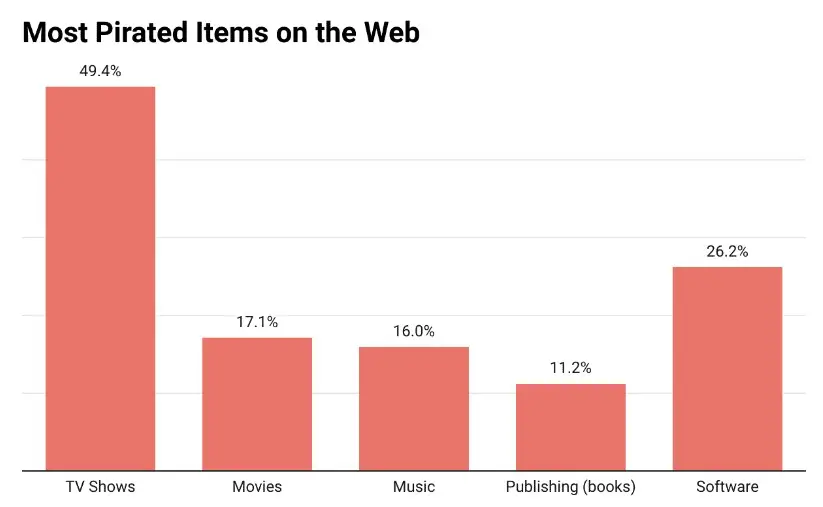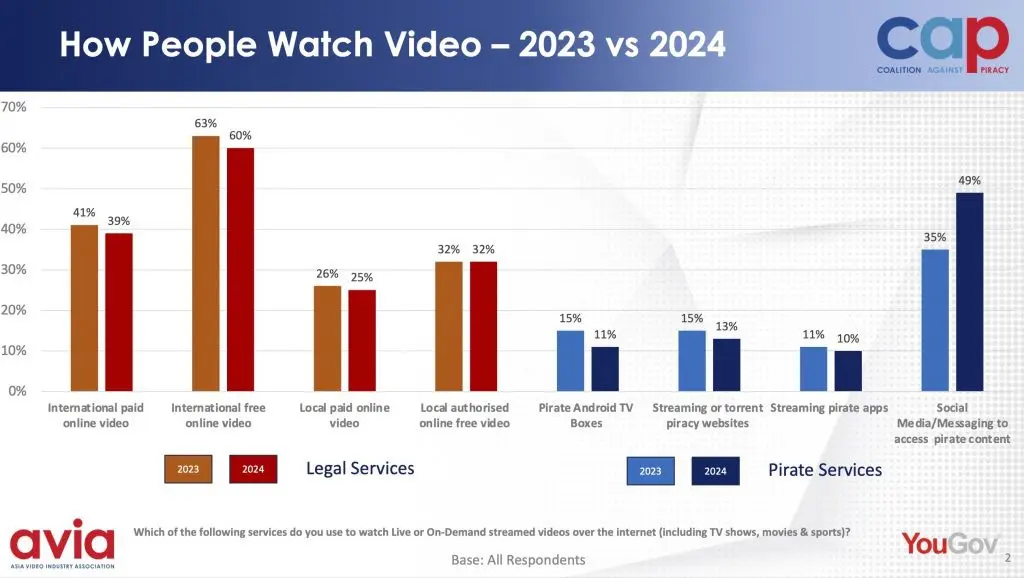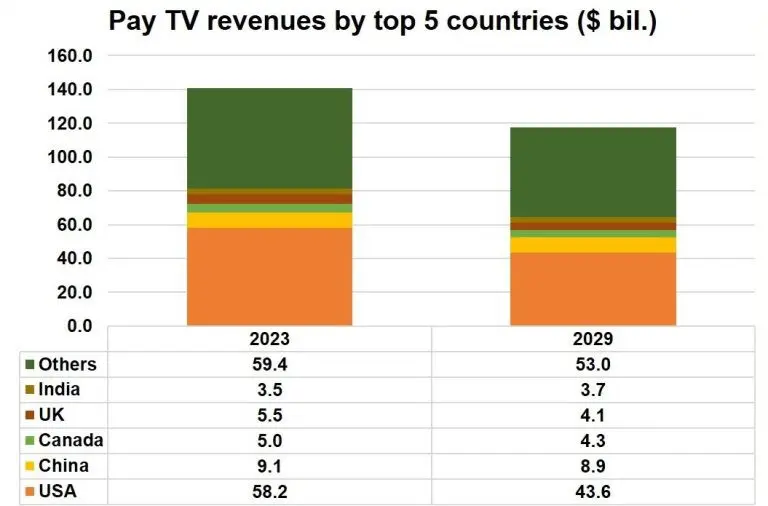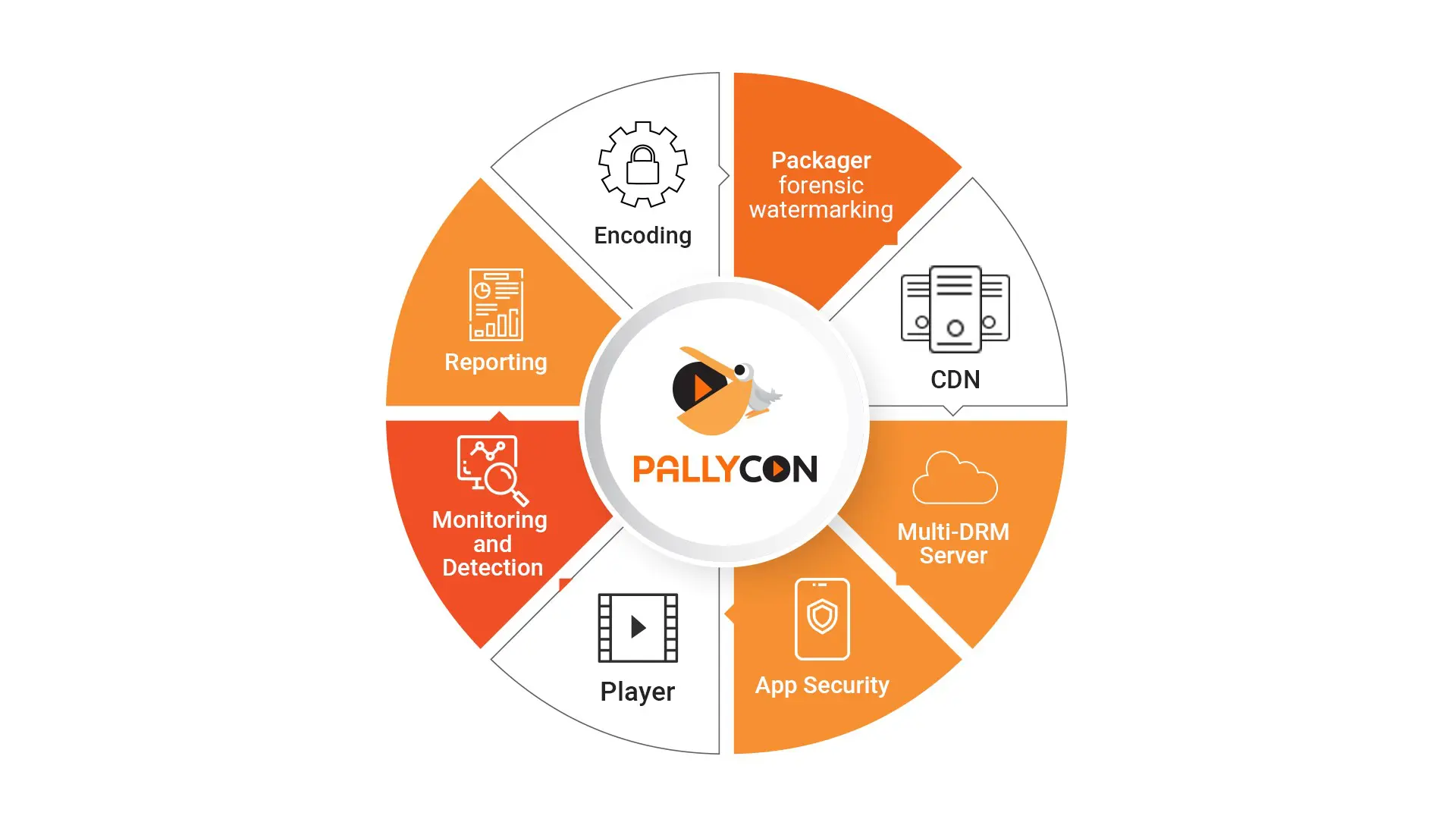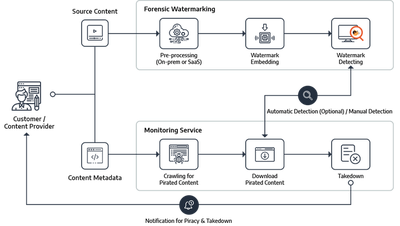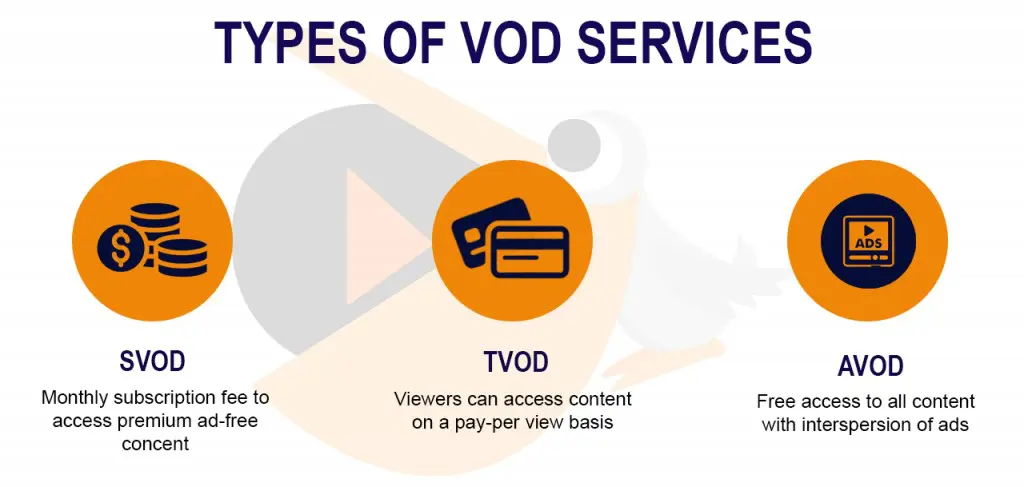
A Deep Dive into What is Anti-Piracy
Anti-piracy meaning refers to the strategies and measures implemented to combat the unauthorized use and distribution of copyrighted material. In today’s digital age, these efforts are crucial for protecting intellectual property rights and ensuring fair compensation for creators.
The scope of the anti-piracy definition covers various forms of digital content, including software, films, music, and literature. Its primary objective is to safeguard the rights of content creators and copyright holders, ensuring they receive proper recognition and financial remuneration for their work.
A recent report found that in three key regions – North America, Europe, and the Asia-Pacific – 23.8% of internet bandwidth is used for piracy. Talking about India, where the digital entertainment market is booming, piracy costs the industry $2.7 billion USD in 2023, with more than half of media consumers admitting to accessing pirated content, primarily through streaming services.
This isn’t just a local issue; globally, 215 billion visits were made to piracy websites in 2022, an 18% jump from the year prior. In the U.S., streaming platforms are projected to lose $113 billion to piracy by 2027, according to Parks Associates.
Ready to explore what is anti-piracy, how to keep your favorite content legal, and the creativity flowing? Let’s try to understand about Anti-Piracy in detail.
Anti-piracy measures are essential across multiple industries, each facing unique challenges in combating piracy. Key aspects include maintaining a strong legal framework, implementing advanced technologies, conducting rigorous enforcement, fostering innovation, promoting access to affordable legal content, encouraging global cooperation, and preserving content integrity.
What are the Key Aspects of Anti-piracy?
Anti-piracy encompasses a range of strategies and measures designed to protect intellectual property and combat unauthorized use and distribution of copyrighted material. Key aspects of anti-piracy include:
-
Technological Solutions :
Implementation of Digital Rights Management (DRM) systems, watermarking, and encryption techniques to prevent unauthorized access and track content distribution.
-
Legal Enforcement:
Pursuing legal actions against infringers, issuing takedown notices, and advocating for stronger copyright laws.
-
Content Monitoring:
Utilizing AI and machine learning to scan the internet for pirated content and identify sources of unauthorized distribution.
-
Consumer Education:
Raising awareness about the ethical and economic impacts of piracy through public campaigns and educational initiatives.
-
Industry Collaboration:
Forming partnerships between content creators, distributors, and technology providers to share intelligence and resources in combating piracy.
-
Access Control:
Implementing robust user authentication methods and geo-blocking to restrict unauthorized access to content.
-
Regular Updates:
Continuously updating software and security measures to address vulnerabilities exploited by pirates.
-
Alternative Business Models:
Offering affordable, accessible legal alternatives to discourage consumers from seeking pirated content.
These strategies work in concert to create a multi-faceted approach to protecting intellectual property. As piracy methods evolve, anti-piracy measures must adapt, balancing the need for content protection with user experience and fair use considerations. Effective anti-piracy efforts require ongoing investment, innovation, and collaboration across industries and borders.
What is the Need for Anti-piracy?
The digital revolution has transformed content consumption, making anti-piracy measures more critical than ever. Thanks to the internet, piracy has become a global issue, allowing content to be shared across borders instantly and complicating legal enforcement efforts. Piracy websites received 141 billion visits in 2023, a 12% increase since 2019, according to a report by MUSO and Kearney. In Europe, 33% of people aged 15-24 report using illegal online sources intentionally.
Here’s why anti-piracy efforts are more important than ever:
-
Digital Transformation:
As content distribution has shifted predominantly to digital platforms, the ease of unauthorized copying and sharing has increased exponentially. Streaming services, digital downloads, and cloud storage have made piracy more accessible and widespread.
-
Economic Impact:
In the United States, for instance, digital video piracy results in annual losses between $29.2 and $71 billion, affecting the film and television industries. Furthermore, the U.S. Chamber of Commerce reports that digital video piracy results in the loss of between 230,000 and 560,000 jobs, along with economic losses ranging from $47.5 billion to $115.3 billion annually. The Indian entertainment industry alone lost ₹22,400 crore to piracy in 2023, highlighting the massive financial toll on content creators and distributors. This loss affects not only large corporations but also independent artists and smaller production houses.
-
Threat to Innovation:
Widespread piracy can discourage investment in new content creation, potentially stifling innovation and diversity in the entertainment industry.
-
Quality of Service:
Legitimate streaming services need to compete with free, albeit illegal, alternatives, pushing them to improve their offerings and pricing models.
-
Cybersecurity Risks:
Pirated content often comes with malware and infosec risks, making anti-piracy efforts crucial for consumer protection as well.
What are the Types of Anti-piracy?
Various anti-piracy measures work together to create a comprehensive approach to protecting intellectual property across different distribution channels and use cases.
-
Digital Rights Management (DRM):
DRM technologies control access to copyrighted material, preventing unauthorized copying or distribution of digital content.
-
Watermarking and Fingerprinting:
These techniques embed unique identifiers into content to track its origin and distribution.
-
Softlifting Prevention:
This tackles the common practice of using one software license for multiple devices without permission, often seen in workplaces or educational institutions. Anti-piracy software monitors installations to ensure compliance with license terms.
-
Client-Server Overuse Protection:
Often occurring on networked systems, client-server overuse happens when multiple users share a single license across multiple devices. Anti-piracy tools monitor concurrent user sessions to prevent unauthorized access.
-
Hard Disk Loading Prevention:
To combat hard disk loading, where sellers install unauthorized copies on devices they sell, monitoring software helps detect illegal copies and prevent the resale of pirated versions.
-
Counterfeiting Detection:
Counterfeiting involves creating and selling fake software copies. Anti-piracy measures include secure packaging and verification processes, making it difficult for counterfeiters to replicate legitimate products.
-
Online Piracy Counteraction:
Addressing internet-based piracy through monitoring and removing unauthorized content on websites and P2P networks, companies employ automated detection and takedown tools.
-
Renting and OEM Unbundling Prevention:
Renting without authorization and OEM unbundling, where bundled software is illegally separated for individual sale, are mitigated by enforcing end-user license agreements and monitoring product usage.
-
Legal Enforcement:
This involves pursuing legal action against individuals or entities engaged in piracy, including fines and criminal charges.
-
Content Monitoring:
Automated systems scan the internet to detect and report unauthorized copies of protected content.
-
Education and Awareness:
Campaigns to inform the public about the legal and ethical implications of piracy.
-
Software Activation:
Requiring users to activate software with unique keys to prevent unauthorized installations.
The effectiveness of these measures often depends on their combined implementation and continuous adaptation to new piracy techniques.
What is the Role of Anti-piracy?
The role of anti-piracy extends beyond mere protection of intellectual property; it serves as a cornerstone for fostering a thriving digital ecosystem. Here’s a unique perspective on its multifaceted role:
-
Digital Ecosystem Balancer:
Anti-piracy measures act as a counterweight in the digital world, ensuring that the scales don’t tip too far in favor of unrestricted access at the expense of creators’ rights. This balance is crucial for maintaining a healthy online environment where both innovation and fair compensation can coexist.
-
Innovation Catalyst:
By safeguarding the fruits of creative labor, anti-piracy efforts create fertile ground for innovation. When creators know their work is protected, they’re more likely to take risks and push boundaries, leading to groundbreaking content and technologies that might otherwise never see the light of day.
-
Economic Stabilizer:
In the digital economy, anti-piracy plays a role akin to a financial regulator. It helps maintain the value of digital assets, prevents market distortions caused by illegal distribution, and ensures the economic benefits of creative workflow through legitimate channels, supporting jobs and industries.
-
Digital Ethics Educator:
Anti-piracy initiatives serve as a practical curriculum in digital ethics for consumers. They highlight the real-world consequences of online actions, fostering a sense of responsibility and respect for digital property rights among users.
-
Technological Arms Race Driver:
The constant battle against piracy drives technological innovation on both sides. This ongoing “arms race” between pirates and anti-piracy measures leads to advancements in areas like encryption, content delivery, and digital forensics, which often have broader applications beyond content protection.
-
Global Digital Trade Facilitator:
By establishing and enforcing standards for digital content protection across borders, anti-piracy efforts facilitate global digital trade. They create a framework of trust that allows content creators and distributors to confidently enter new markets.
-
Quality Assurance Mechanism:
Anti-piracy measures indirectly serve as a quality control system for digital content. By channeling consumers towards legitimate sources, they ensure that users experience content as the creators intended, free from the degradation or malware often associated with pirated versions.
-
Cultural Heritage Preserver:
In protecting current digital creations, anti-piracy efforts also play a role in preserving cultural heritage. They ensure that digital art, music, literature, and other forms of creative expression retain their integrity and value for future generations.
-
Consumer Protection Shield:
While not its primary purpose, anti-piracy acts as a shield for consumers, protecting them from the risks associated with pirated content, such as malware, identity theft, and exposure to inappropriate or unregulated material.
-
Digital Market Evolutionist:
Anti-piracy measures force the evolution of digital markets. They push businesses to innovate in their content delivery models, pricing strategies, and user experiences to make legal options more attractive than pirated alternatives.
In essence, the role of anti-piracy in the digital age is that of a multifaceted guardian – protecting not just content but the very foundations of a fair, innovative, and sustainable digital future.
Benefits of PallyCon Against Piracy
The PallyCon Anti-Piracy Solution offers several distinct advantages for content creators and distributors in the fight against illegal content distribution. The solution protects their intellectual property, reduces financial losses due to piracy, and maintains the value of their creative content in the digital marketplace. Here are the top advantages of the Pallycon Anti-Piracy solution:
-
Comprehensive Monitoring:
PallyCon’s solution uses a smart, intelligent crawling engine to detect hundreds of illicit pirated links across the internet, including the web, social media, and P2P sites.
-
Global Coverage:
The service provides worldwide monitoring for illegal content leakage, ensuring protection across different regions and platforms.
-
Forensic Watermarking Integration:
The anti-piracy solution is integrated with PallyCon’s Forensic Watermarking technology, allowing for unique identification of piracy sources.
-
Automated and Manual Takedown:
Customers can choose between automated or manual takedown processes for illegally leaked content, providing flexibility in handling piracy issues.
-
DMCA Takedown Notices:
The Pallycon anti-piracy service can issue DMCA Takedown Notices to pirate websites, facilitating the removal of unlawful content.
-
Source Tracing:
The Pallycon Anti-piracy solution can trace the source of illicit content generators, sending red alerts when illegal content leakage is detected.
-
24/7 Automated Monitoring:
The Pallycon service provides round-the-clock monitoring, ensuring constant vigilance against piracy.
-
Suitable for VOD Content:
The Pallycon anti-piracy solution is particularly well-suited for video-on-demand (VOD) content.
-
Content Protection Suite Integration:
The Pallycon anti-piracy solution is part of a broader suite of content protection services, including Multi-DRM and app security, providing a comprehensive approach to content security.
-
Customizable Monitoring:
Users can register specific content for monitoring, set release dates, and choose between standard and premium monitoring types.
-
Detailed Reporting:
The Pallycon anti-piracy service provides monitoring results and allows users to track the status of takedown requests and watermark detection processes.
FAQs
-
What is anti-piracy?
Anti-piracy refers to measures and technologies aimed at preventing the unauthorized use, distribution, and reproduction of copyrighted content like software, films, music, and books. It protects creators’ intellectual property rights, ensuring fair compensation and promoting legal content consumption.
-
Why is anti-piracy important today?
In the digital era, piracy costs billions annually, impacting creators and industries. Anti-piracy is crucial for protecting revenue, encouraging investment in content creation, and safeguarding consumers from risks like malware often associated with pirated content.
-
What are common anti-piracy methods?
Key methods include Digital Rights Management (DRM) to control access, forensic watermarking to trace content origins, and legal enforcement to deter piracy. Public awareness campaigns also educate users about the impacts of piracy.
-
How does PallyCon’s anti-piracy solution work?
PallyCon’s solution monitors digital content globally, uses forensic watermarking to trace illegal content sources, issues real-time DMCA takedowns, and provides detailed analytics on piracy trends, making it a comprehensive solution for content protection.

Harish Bhat is a Forensic watermark Product Manager at PallyCon and has been associated with media and broadcasting industry for over 13 years. Apart from technical writing, an avid reader of latest trends in the streaming world and content protection.
